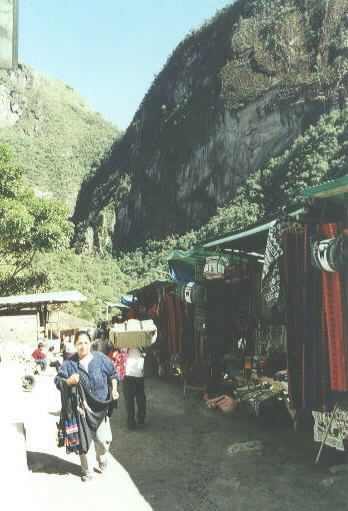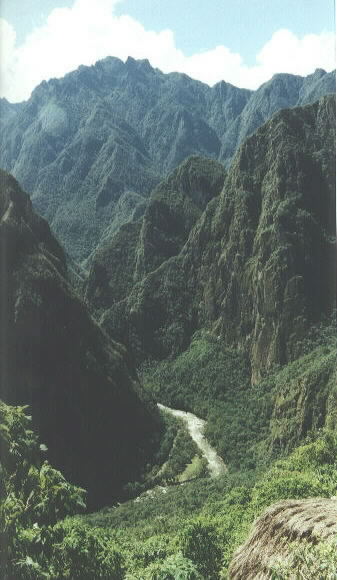|
Cuzco, Capital of the Inca Civilization
...Continuing Our Trip to Peru
May 12-16, 2000
|
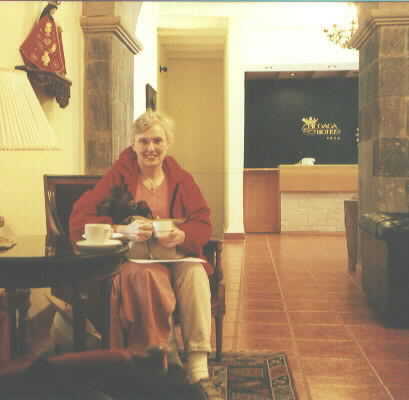 |
Cuzco is an ancient city two miles above sea level in the Andes. We had been warned about the problems of adjusting
to the altitude, so we were glad that our tour package had a day of rest after our plane arrived in the morning.
We drank the offered coca tea and went to bed to try to sleep. Neither of us had much energy, since just breathing
seemed to take as much energy as we could muster. Artie was lucky and didn't get a headache, but I did, and it
didn't leave me until we had been there for 24 hours, despite the Tylenol I took. |
| On our second day, we had a tour of the city of 300,000 people. It has a timeless look of adobe brick buildings
topped with red tile roofs. The streets are paved with stone, so that they, like the buildings, will last. We visited
some Inca ruins both in the city and on a hill overlooking the city and were introduced to the differences in the
stone work depending on the date. |
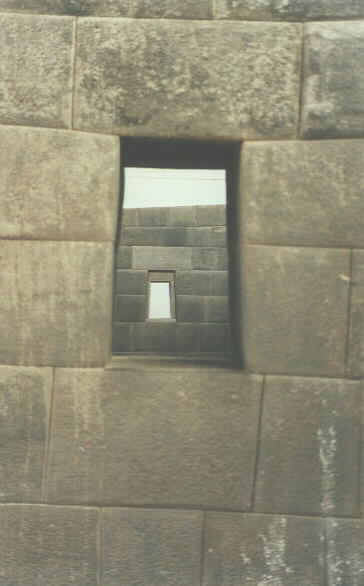
|
The stones at the left were shaped relatively near the end of the Inca period, in the 1500s, since there is no
mortar used to hold them together. It is amazing to think about how these ancient people could have shaped the
stones so precisely. It's even more amazing that so many of the walls they built are still standing, especially
when you consider how intent the conquistadors were to destroy everything religious, plus the earthquakes in
this part of the world. |
|
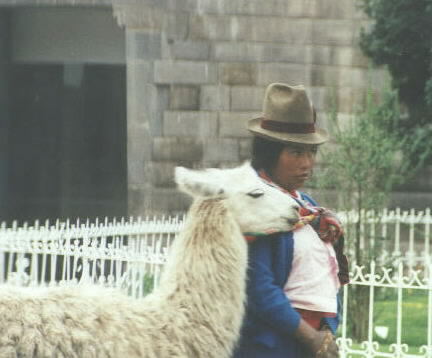
|
This woman and her llama were waiting around in front of a museum of Incan temples. The hat she is wearing is typical
of those worn by Indian women here, and from the color, we can tell she is unmarried. Married women wear high white
hats like this.
Since Cuzco is very tourist oriented, there are people who dress in their native dress and wait around for tourists
who will take their pictures for tips. Vendors are everywhere. |
| Cuzco is a city with an active night life. The central square is brightly lit at night. The cathedral, which was
included on our city tour, is one of three adjoining churches on one side of the central square. This section is
in the midst of being reconstructed. On another side of the square is another large church. After we enjoyed our
early dinners, the crowds would only be starting to show up in the streets at night. |
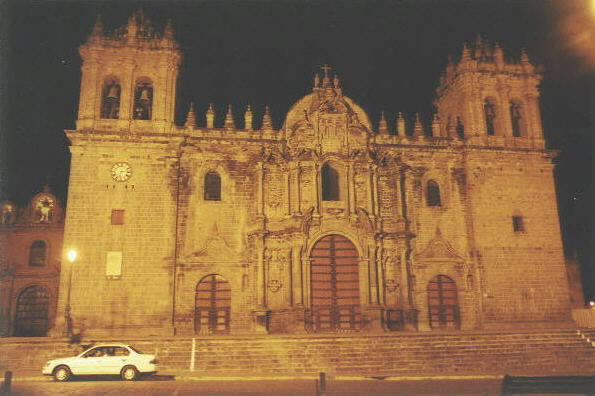 |
|
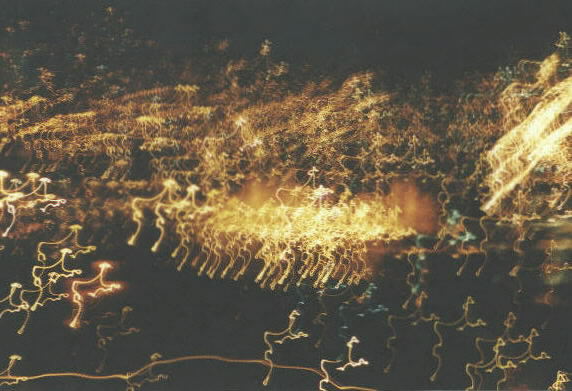
|
From a much greater distance, this is a view of the city of Cuzco at night! The concentration of lights in the
center of the picture is the central square of Cuzco taken from up in the hills. The jiggle isn't because we can't
hold a camera still for a long exposure. It was taken from the train as we returned from our trip to Machu-Picchu. |
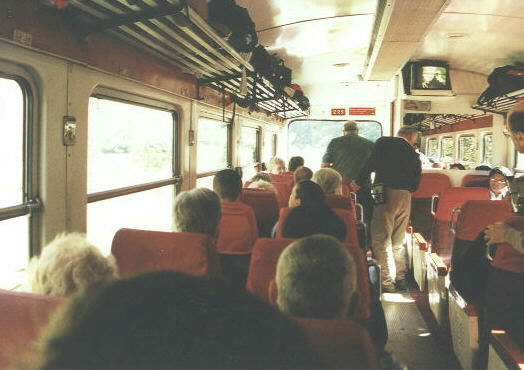 |
Starting our trip to Machu-Picchu...
The day after our city tour, we took the train to Aguas Calientes, where we got the bus to Machu-Picchu. This was
a very long day, so we were happy to have gotten all that extra sleep. In fact, we went to bed the night before
at 8 p.m. with exhaustion from the exertions of the day, so we were relatively bright eyed and bushy-tailed for
our 5:30 a.m. departure from the hotel. |
Getting out of Cuzco was most interesting. Because the mountains are so steep, they employ a series of switchbacks.
traveling forward to the end of the track, and then backing up after a trainman hops down and throws a switch that
put us on a different track. We zig-zagged up the mountain and then followed a river most of the way to Aguas Caliente.
The train trip took about 3 and 1/2 hours, clattering through countryside farms, mountains and jungle. The train
was pretty comfortable, with assigned seats and stewardesses, similar in many ways to a plane ride, although the
ride wasn't always as smooth. The sound of the wheels on the tracks reminded us of my sleep soother's "night
train" setting. We enjoyed a boxed breakfast snack on the way, and we had the opportunity to buy additional
snack food from the stewardesses, and gifts and snacks from vendors (through the windows) at some short stops along
the way. A train trip is a nice way to see the countryside. |
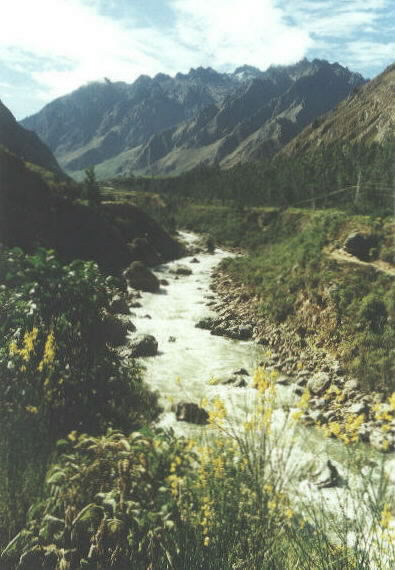 |







